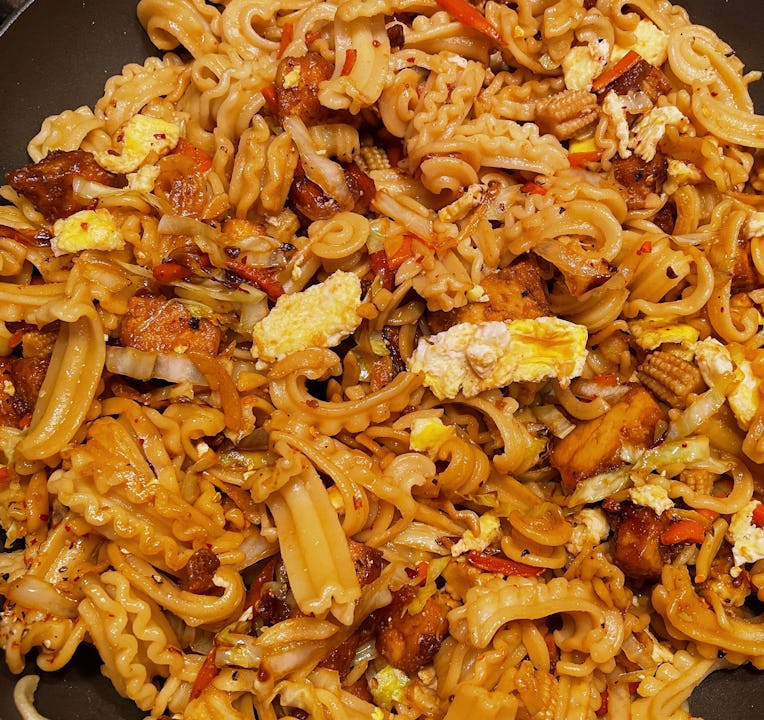Regular Food Review: Pasta Chow Mein
Easy assimilation food

I’m convinced that every Chinese-American family has made some version of this meal before: 炒面 (a.k.a. chow mein), only using dried Italian pasta instead of the kind of noodles more commonly associated with stir fry. This is what the writer and critic Soleil Ho might call “assimilation food”: dishes that bridge the gap between an immigrant’s homeland and their adopted country, reaching for familiar tastes with ingredients that have been cobbled together based on their availability and likeness, rather than some rigid idea of authenticity.
I first made pasta chow mein as a hungry teen because we were out of the Hong Kong-style dried noodles that we would get at our local Chinese mart every few weeks or so; a noodle is a noodle, I figured (please don’t tell Italians I said this). Now, even with Asian noodles widely available in the “international” aisle of most grocery stores, I still get a hankering for my assimilation dish every once in a while. The pasta (penne, macaroni, farfalle, rotini, rigatoni, even this fancy new cascatelli shape, whatever you want), boiled to al dente before being tossed into the hot wok, lends a toothier bite than thinner stir-fry noodles. Sometimes the other ingredients — vegetables, egg, bits of tofu — get wedged into the crevices and hollows of the pasta. It’s not that it’s better, or worse, than a more conventional chow mein; it’s just different, but also close enough. That’s what assimilation food is. 4/5 stars.